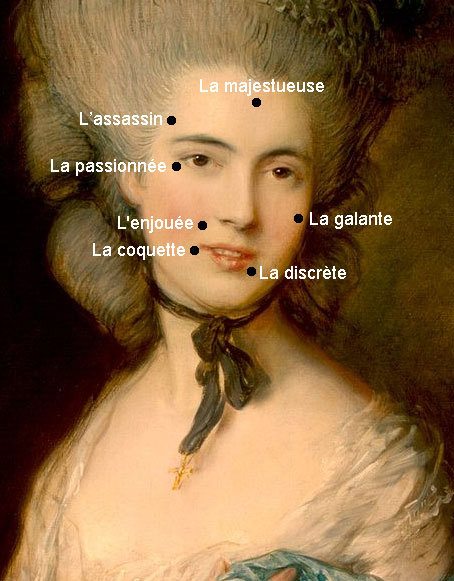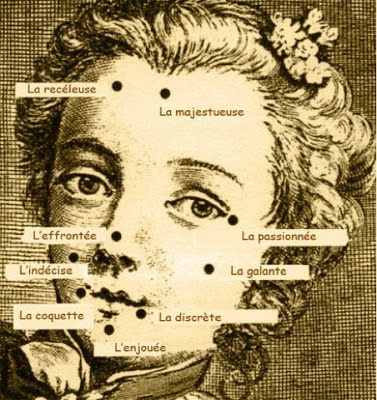sartorialadventure:hereticalheraldry:Names of 18th-century beauty patchesAlong with covering smallpo
sartorialadventure:hereticalheraldry:Names of 18th-century beauty patchesAlong with covering smallpox scars and other blemishes, patches (small pieces of silk that were glued onto the face) could express other things about the wearer, based on where they were worn:“Passionnee”: passionate/smart“galante”: gallant/flirtatious“l’effrontee”: also called “l’impudent”, impudent, sassy“l’enjouee”: playful/gay“la discrete”: discreet or prudish“coquette”: flirtatious. could also be worn on the lip.“assassin”: murders you with her beauty and haughtiness“majestueuse”: majestic, haughtyA patch used to cover blemishes was called “la voleuse” (thief) or “the concealing”In English, a patch at the corner of the mouth was called “the kissing”near the nose was “the brisk”close to the eye, provocative or fascinatedabove the lip, flirtatiousunder the lip, mischievouson the chest, generousAn Englishwoman who supported the Whigs (political party) could wear a patch on the right side of the forehead, while supporters of the Tories wore one on the left. The politically neutral lady might wear one on both sides. (Some very politically-minded women had it stipulated in their marriage contracts that they were allowed to wear their patches on whichever side they wished, regardless of their husband’s political affiliation! This meant that the wearing of the patch might be the only way a woman could express her political views publicly.)An engaged woman might wear her patch on her left cheek while a married woman wore it on her right. -- source link
Tumblr Blog : hereticalheraldry.tumblr.com

